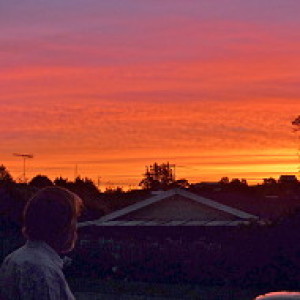Coromandel gold
Coromandel Peninsula forms the eastern shore of the Hauraki Gulf. The Waitemata Harbour is described as a "drowned river valley" and it opens into the Gulf. Auckland City is centred around this magnificent natural harbour. Kawau Bay is separated from the open gulf by Kawau Island, and is just below the cliff where we have our beach house. From the edge of the property, and better from up on the Highfield Gardens Reserve hilltop, we can see Coromandel over the top of and south of Kawau Island.
Coromandel was the site of gold mining in the 19th century. Although the first rumours of gold in the Coromandel were in the 1820s, the first big strike was in 1867 when a speck of gold was seen in the rock face of a waterfall in Kuranui Stream near Thames. Quartz reefs containing gold were found, some being very valuable. The Caledonian mine in 1870 produced almost 4,000 kg of gold and silver.
However, recovery of gold from the quartz was difficult and inefficient, until in 1889 the New Zealand Crown Mines Company used cyanide extraction in their mines at Karangahake, achieving recovery rates of 90% for gold and 50% for silver.
Gold was also found in Waitekauri in 1870. The main mine was the Golden Cross Mine at the head of the Waitekauri River. By 1914 the known ore reserves were exhausted. During the time that gold was actively mined, the town of Waitekauri was busy, with hotels, stores, a chemist, bakers, tailors and a public school.
By the time I was a lad there on the farm awarded to my father under the Rehab Scheme for men returning from World War II, there was no township at Waitekauri, and no school. We had to bus five miles down the valley to Waikino. Farms now occupied the valley, and the hills on either side.
Evidence of the once prosperous town was able to be seen including a dangerously deteriorating hotel which had been long abandoned, and also the remnants of the 40 Stamp Mill with its famous water wheel, the largest in the Southern hemisphere. The crushed ore was taken down the valley to Waikino where the cyanide extraction process took place.
The Golden Cross Mine was worked again between 1991 and 1998 when it produced 20 tonnes of gold and over 50 tonnes of silver. There was much opposition on the grounds of conservation, and damage to the environment was of course inevitable .
This photograph, taken on my run this morning (from the Highfield Garden Reserve hill)has the northern part of the Coromandel Peninsula visible in the distance behind Kawau Island. The lower central parts of the Peninsula are barley visible, and where I once stayed is well south.
Now, the gold is easily prospected from the sky at the right time and in the right conditions, and with no damage to the environment. (In the foreground is Algies Bay and some of its moorings)

Comments
Sign in or get an account to comment.


